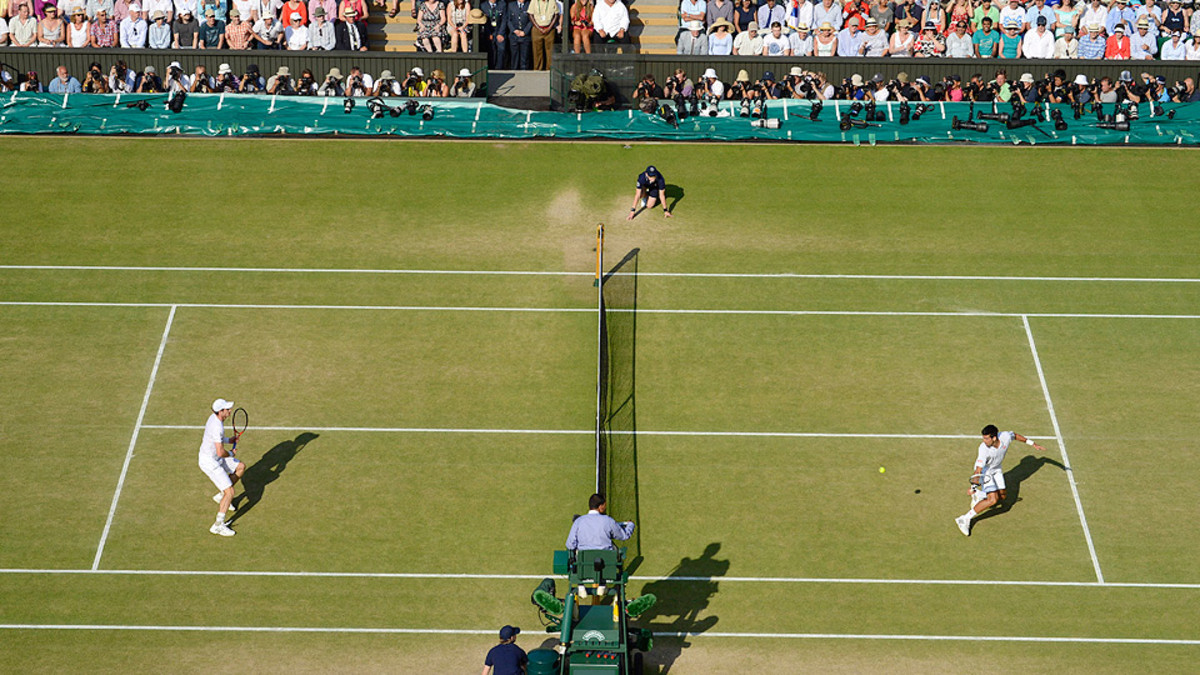How the All England Club prepares and maintains the grass for Wimbledon
Ever since March, the sward – a fancy term for an area of short grass – at the All England Club has been cut about a millimeter every two weeks. From the hefty winter height of 13 millimeters, the grass on the courts will be sliced down to a playing elevation of eight millimeters, reaching that mark about four weeks before the start of Wimbledon.
According to Will Brierley, the All England Club’s senior groundsman, the process to prep the 19 championship courts and 22 practice courts at the All England Club starts one week after the tournament ends, when about 12 millimeters are sheared off of the championship courts.
“This removes all weak and weed grasses from the sward, and it reestablishes the levels where play has worn the surface,” Brierley said.
Then crews till a seedbed to lay new seed – about one ton gets used each year – and fertilizer. Covering the courts with a semi-permeable translucent growth cover for up to a week regulates heat and moisture. A program of mowing in the fall helps firm the surface and levels the grass before each court receives a top-dressing of fine soil – about four tons total – to ensure perfect leveling.
NGUYEN: Revisiting the victors of Wimbledon’s wacky Wednesday last year
With each court’s “seedbed” rebuilt in the summer and fall above the sub-surface of drainage pebbles, drain pipes, small stones and coarse soil, prepping for Wimbledon intensifies in spring. A post-winter roll removes frost and a spraying program starts in April to help with plant growth, durability, color and root development. The sward gets cleared of weeds and then the mowing and marking regime steps up.
“The date of this is worked back from the tournament start date to enable us to maximize the application of the chemical,” Brierley says.
In 2000, Wimbledon moved away from a grass mixture of 70 percent ryegrass and 30 percent red fescue to a full 100 percent ryegrass, made up of three cultivars. Without the cushioning effect of the fescue grass, the ball bounce improved.
“It was concluded that a healthier and more durable surface could be achieved with a pure ryegrass mixture,” Brierley says. “Advances in grass seed development meant a sward of equal density could be produced without the need for fill in fescue grasses.”
Come tournament time, daily care of the courts includes measuring wear and hardness. Using the Sports Turf Research Institute to test soil moisture content, court hardness, wear and plant chlorophyll levels, that daily data defines how much water each court receives each evening.
NGUYEN: Can Andy Murray handle the pressure of defending his Wimbledon title?
Early every morning, Wimbledon courts receive a mow from a Toro cylinder mower and marks from a wheeled machine that lays titanium dioxide 50 millimeters wide for the lines – except the 100-millimeter baseline – requiring a total of about 500 gallons each year (practice courts get their care in the evening).
On the middle Sunday when no play occurs, the grounds crew uses a machine dubbed the Billy Goat to essentially vacuum and clear off any “kicked up debris from the first week’s play.”
All championship and practice courts at Wimbledon receive the same care, ensuring that playing on Centre Court or practice court 9 give players the same experience “as close to humanly possible,” Brierley said. The only special need includes a machinery lift to help equipment get into No. 2 Court.
It takes nearly 12 months of preparation to coax just two weeks of high-level performance out of Wimbledon’s grass.
Tim Newcomb covers stadiums, design and gear for Sports Illustrated. Follow him on Twitter at @tdnewcomb.





